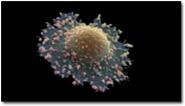1.2.1 Cell–cell contact-dependent signalling
In some instances, cells may communicate directly with their immediate neighbour through gap junctions (Figure 3a). Communication via gap junctions partially bypasses the signalling model we have outlined above in Figure 2. Gap junctions connect the cytoplasm of neighbouring cells via protein channels, which allow the passage of ions and small molecules (such as amino acids) between them (as an example, gap junctions allow the coordinated contraction of cardiac muscle cells).
Alternatively, cells can interact in a ‘classic’ signalling manner, through cell surface molecules, in a so-called contact-dependent way (Figure 3a (ii)). Here the signalling molecule is not secreted, but is bound to the plasma membrane of the signalling cell (or may even form part of the extracellular matrix), and interacts directly with the receptor exposed on the surface of the target cell. This type of signalling is particularly important between immune cells, where it forms the basis of antigen presentation and the initiation of the immune response, and also during development, when tissues are forming and communication between cells and their neighbours is paramount in deciding between cell fates such as proliferation, migration, death or differentiation.
